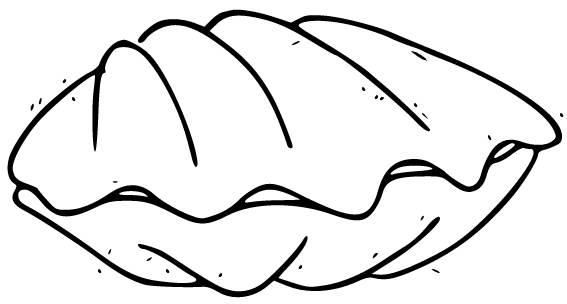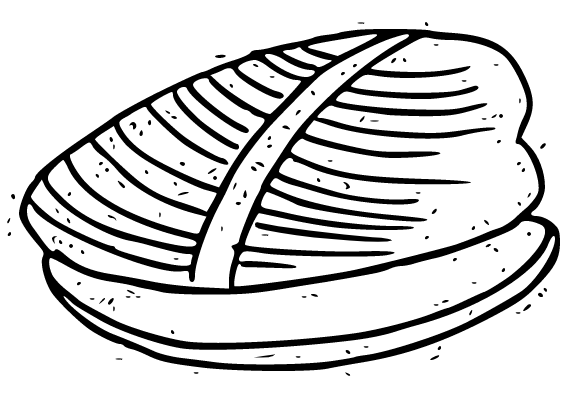-

-
The Discerning Mollusk's Guide to Arts & Ideas
-


friend of mine who’s a writer keeps all of her manuscripts even after her books have come out. Not only this, she prints them out. She keeps the hardcopies of her manuscripts. Not only this, she keeps the notebooks in which she wrote the very first drafts of what would become the manuscript. She keeps it all.
I should point out that her books are very good. But this doesn’t justify holding on to the manuscripts, every draft, and even the notebooks where she wrote the very first draft.
I should point out also that this friend keeps all the books she was reading when she wrote her book. Not only this, she also keeps all the notes she took on the books she was reading when she wrote her book. These she keeps either in a scrapbook or folded into the notebooks in which she wrote the original drafts.
I should point out that her room is very clean.
I should point out also—since I’m pointing—that this friend also keeps all her electric bills. That is, after she pays her electric bills, she keeps the invoice, the details, how many kilowatt hours were used in each two-month period. Not only this, she keeps the gas bills as well, and the internet bills. All the bills she keeps in a series of black folders in a credenza in her bedroom. And when she says “credenza,” she says “credenza” in the most affected way.
I once asked her about her habit of holding onto things, but she brushed it aside as if it were nothing.
“I certainly don’t hold onto things like that,” I said.
“Well, you be you,” she said, and then changed the subject.
I should also point out that she saves all her bus tickets. Not only this, but her subway tickets as well, and theatre tickets, and movie tickets. Any kind of ticket at all, she saves. These she keeps in an enormous purse. Not only enormous, but packed full of all kinds of receipts and who knows what else.
I should point out that her purse, though both enormous and enormously full, is very well organized. I know, I have seen it. Once I was with her at the grocery store. We were buying a bottle of wine.
“I will buy it,” I said.
“No, no,” she insisted, “I insist.”
“Okay, then,” I deferred, “I defer.”
She rolled her eyes at me and then turned her attention to the clerk.
“$12.95,” the clerk said.
“Right,” said my friend, and began riffling through her enormous and enormously well-organized purse. Within ten minutes she had gathered exactly twelve dollars and ninety-five cents. Not only this, but a single dried flower—a daisy, I think—that she gave to the clerk with both a flourish and a smile.
I should point out that my friend saves all the empty bottles of wine that she drinks. Not only these but also the bottles of gin, vodka, tequila, vermouth, Campari and Triple Sec. She keeps these on a series of wrap-around shelves that line a room off the kitchen she refers to as “the library.”
I should point out that my friend is not a drunk. Not even, by her account, a drinker. She merely “partakes.”
I should also point out that the library is overflowing with bottles. The door no longer shuts, and some of the bottles that couldn’t find space on the shelves are stacked like wood in a woodpile.
I should point out that my friend’s house is not very big, but it is extremely well organized. It’s not tiny either. I suppose it’s what is referred to as “modest.” It’s in a respectably middle-class neighborhood. It’s a craftsman (I think, though I’m not sure exactly what that word means. When I look it up I find that a craftsman emphasizes “beauty and artisanal motifs,” but some craftsmans [craftsmen?] are ugly, and I’m not exactly sure what an artisanal motif is. I should point out that looking up what a craftsman is fills me with disgust and makes me despise the pretentiousness of architecture even more than I already had). She has a small flower garden in front, and in back a giant chestnut tree.
I should point out that my friend saves all the chestnuts that fall from the chestnut tree each year. These she keeps in neat little lines on the windowsills, fronts of bookshelves, running around the molding where the coved ceilings cove, over every doorway, and in some places in big piles in the corners of rooms. Not only this, one closet can’t open because of them. She has drilled a two-inch hole in the top of the closet door through which, every fall, she deposits a thousand or more of that year’s chestnuts.
I should point out, too, my friend (rather extravagantly) considers herself a minimalist. As evidence of this, she cites the fact that she has only one painting in the entire house. It’s a print, really, not a painting at all. It is The Gleaners by Jean-Francois Millet, who until recently I was convinced was English, not of the Barbizon School on the edge of the Forest of Fontainebleau. Not only this, Millet it turns out is not the same person as Whistler or Turner, whose works (my friend often points out) have no place at all in her modest craftsman home. She even goes so far as to affect a sour expression while scoffing, “I wouldn’t even keep them in my credenza.”
A “petcock” is a small valve or faucet used to drain or reduce pressure, as from a boiler. I suppose it’s called this because it looks (a bit) like a rooster. That is, a cock. That is, if you squint your eyes and think of the faucet as a cloud, as in “oh look that one looks like a rooster,” which is to say it doesn’t look much like a rooster at all.
The cock is unfounded. It relies on too many impressionistic assumptions. But this is the reason I love the person who named it. The one who got it all wrong. It is a delightful failure of nomenclature that has stood the test of time. A kind of dead metaphor that never lived, or only lived in the mind of that original nomenclaturist. I admit I’ve never heard the word “petcock” spoken out loud, but it’s in my dictionary (I’ll just assume it’s in yours).
The “pet” bit is even more confusing. I at first assumed it simply meant “little,” and our compound builder of this compound word decided wisely against “littlecock,” in favor of petcock. Good choice, I think, though not without its vulnerabilities. Looking up “pet,” however, I see there is no “little” listed.
The pet in petcock is surely not “an animal kept for amusement or companionship.” It’s a faucet after all. It’s not “an object of the affections,” or “a person loved or indulged, a teacher’s pet.” It must be, I guess, the verb form of pet: “to stroke or caress gently.” It is not a petcock, but a pet cock.
A valve that looks like a rooster (sort of) that you stroke and caress (read: turn) in order to relieve the pressure from a boiler. That is what a petcock is.
Brilliant.

Thomas Walton is the author of Good Morning Bone Crusher! (Spuyten Duyvil 2021), All the Useless Things Are Mine (SM, 2020), The World Is All That Does Befall Us (Ravenna Press, 2019), and, with Elizabeth Cooperman, The Last Mosaic (SM, 2018). He works as an assistant clerk in the Department of Hairy Affairs in Tubdrain's West Coast offices.